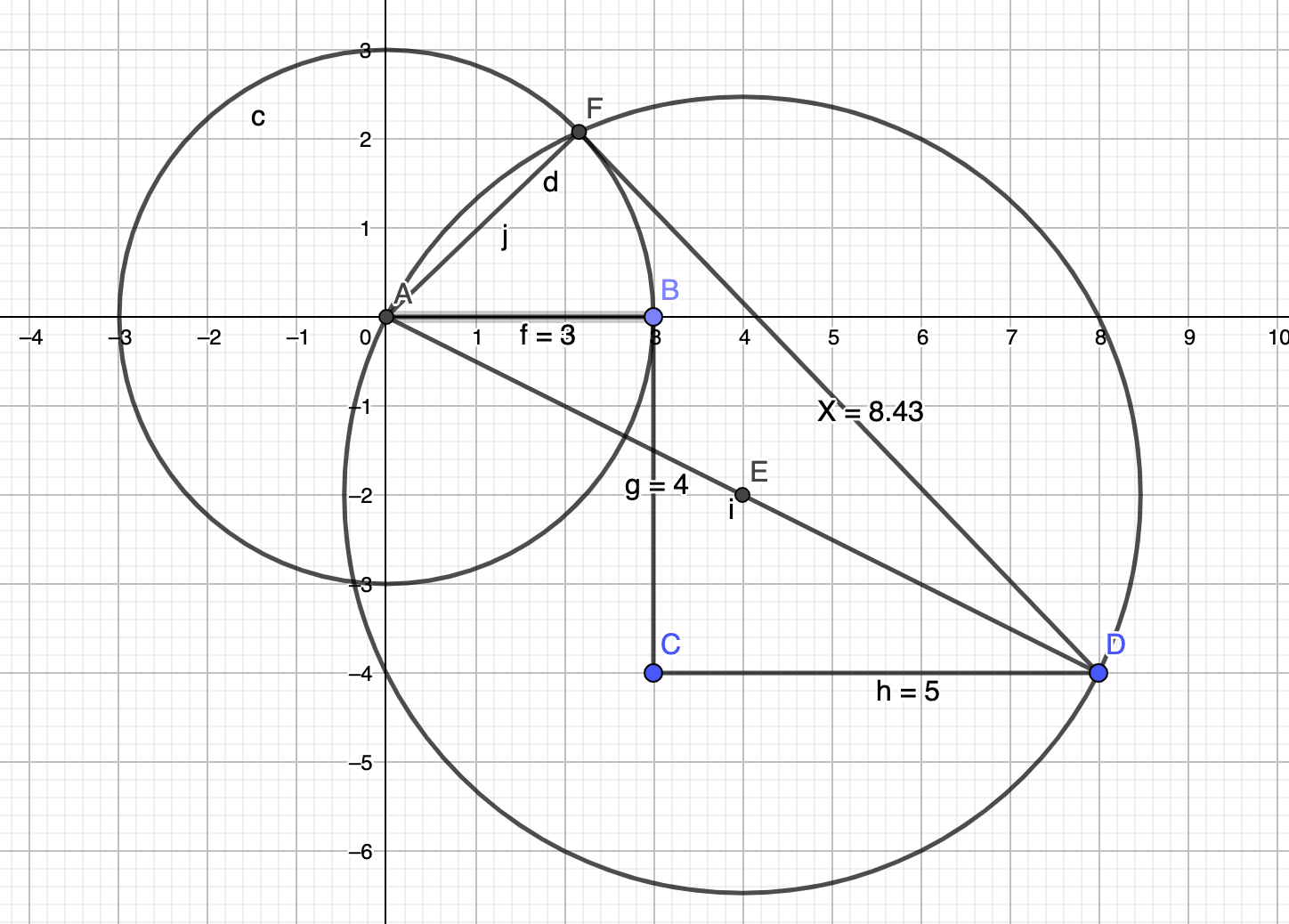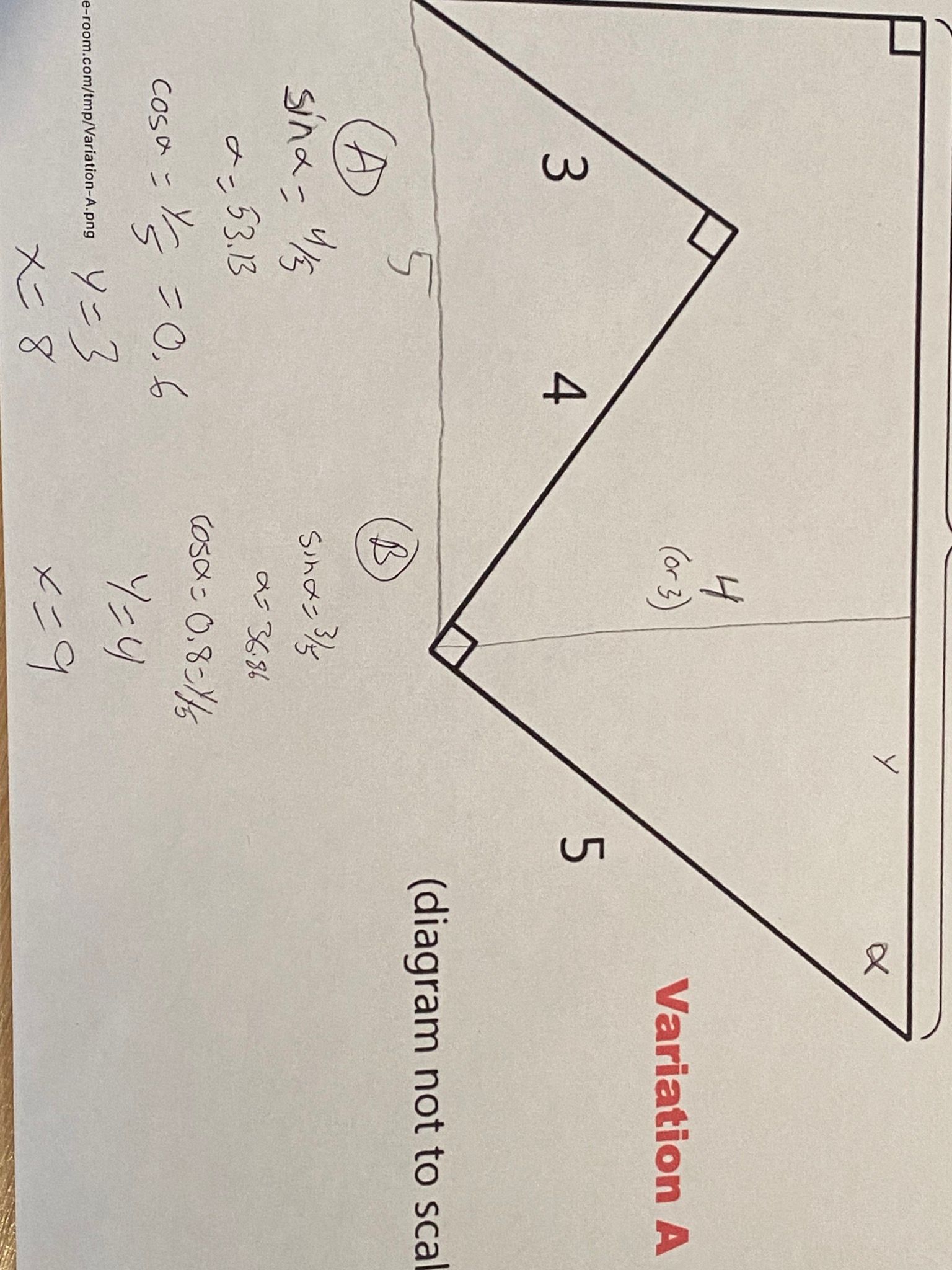Geometry problems ...
-
well the length of the line from the bottom left vertex to the top right vertex can be computed directly as the hypotenuse of a right triangle with the other two sides of length 8 and 4. That length gives you two lengths of a right triangle - 4 and that length in A, or 3 and that length in B. The third length is x. it's then an algebra problem using pythagoras. That method should work for both problems. Not elegant but not too complicated.
-
@Horace said in Geometry problems ...:
well the length of the line from the bottom left vertex to the top right vertex can be computed directly as the hypotenuse of a right triangle with the other two sides of length 8 and 4.
I don't think so. Why should the length of the other side be 8?
-
I'm sliding the length 4 segment (the one in the middle) down the length 5 segment by 3 units so the length 4 segment touches the left vertical. That gives a right triangle of side lengths 4, 8, and sqrt(80). sqrt(80) is the hypotenuse of the right triangle with other lengths y and x, where y is either 3 or 4 in the two problems and x is the answer.
-
Ax's method for problem A probably starts with the 8/4 right triangle idea and from there finds that x must be 8 because there are then two symmetric right triangles with their hypotenuses, er hypoteni, in common, and we know both have equal lengths of 4 for the short side and they must also have equal length for the long non-hypotenuse side, which in that case is 8, by the original idea of constructing the 8/4 triangle.
-
My solution to Variation-A:

The black outline polygon ABCDE is the information provided in the problem.
- Use the information from the BCDE line segments to construct the BF(D)E triangle.
- Realize that the BAE triangle is congruent to the BFE triangle.
- Hence the length of FE equals the length of AE, x = 8
-
My solution for Variation-B, as mentioned before, need to apply the Pythagorean Theorem twice, but it is essentially the same as already described by @Horace (4 posts above, and 6 posts above).
Some one made YouTube video that very nicely illustrated that solution:
Link to video
I got these two problems from that YouTube video.



